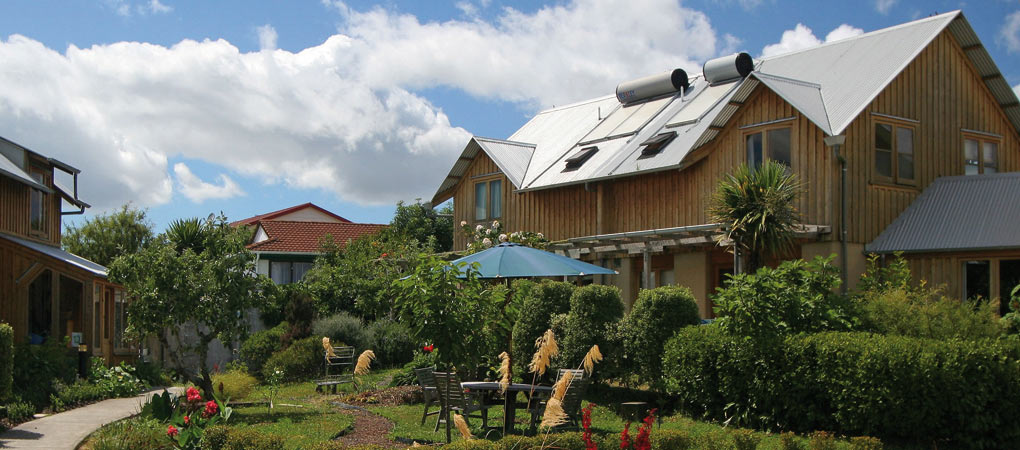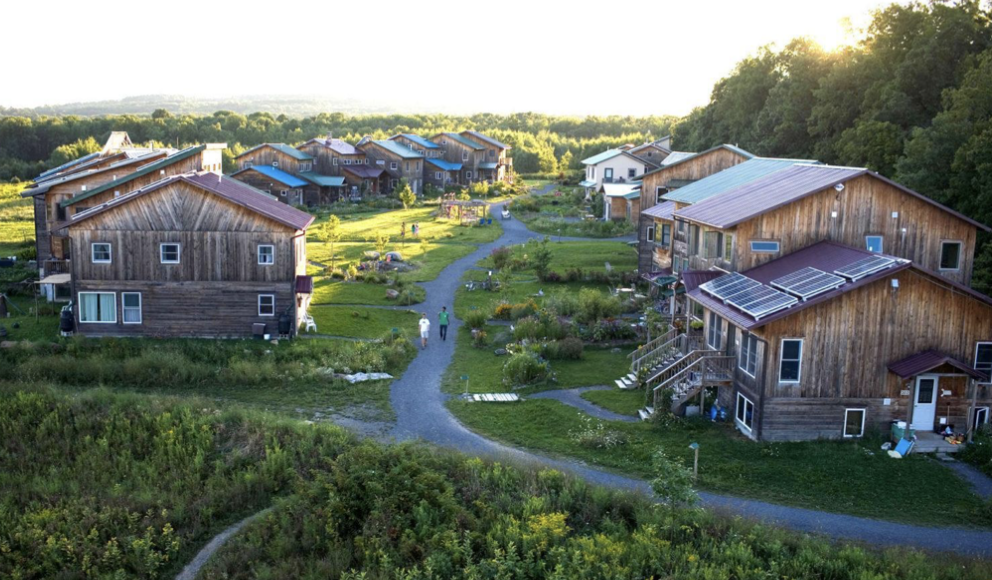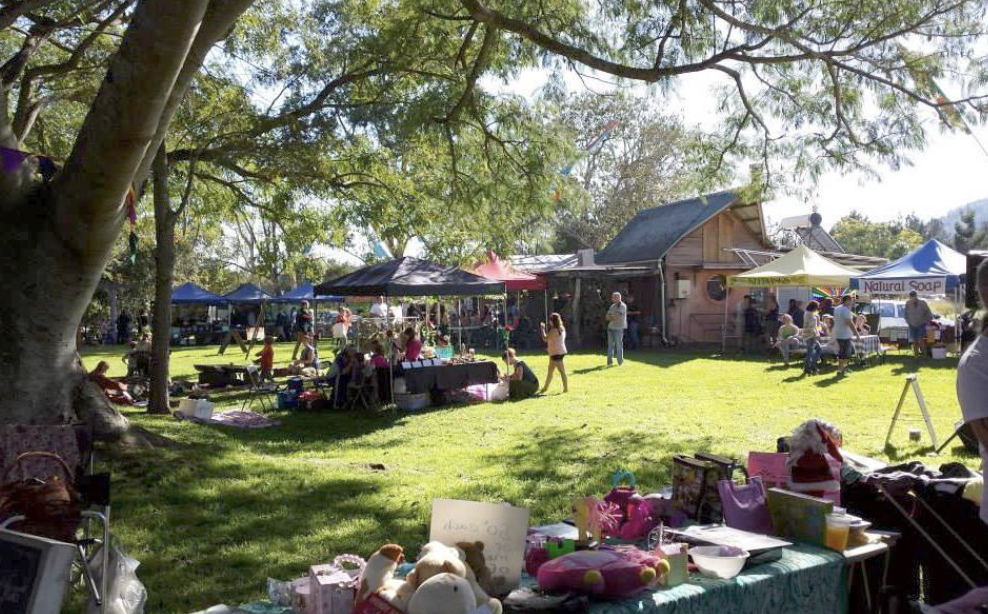While we’re not close to reversing climate change any time soon, we’ve all come a long way in becoming self-aware and striving to change our lifestyles to be more sustainable. In a recent study, 46% of US, China, and UK residents said that they’re doing all they can to live more sustainably. And, currently, 100+ countries have policies on sustainable consumption and production.
One of the main principles of social and environmental sustainability is having all of us do it imperfectly, rather than a few of us doing it perfectly. Today, several communities worldwide are showing us exactly how that’s done, and the positive changes that are brought about when people put their minds and hearts together.
Here, we’re talking about five of these sustainable communities that have made sustainable living a practice that’s doable for all. They are living, breathing models for us to learn from and be inspired.

Photo credit: Truman Media Network
Dancing Rabbit Village
A developing sustainable community in northeastern Missouri, the Dancing Rabbit Ecovillage is a thriving example of positive human interaction within the natural world. Not only do the members advocate sustainable and responsible living but also promote a social culture that is both vibrant and non-exploitative.
The growing ecovillage is home to a diverse range of people. They enjoy sharing ideas of sustainable living with the world and aim to present themselves as a viable alternative community rather than isolating themselves from the mainstream.
All residents of the DR village follow sustainability guidelines and ecological covenants set by the community. They build homes with straw bale and cob, use electric vehicles, eat local and in-season food, and consume renewable energy.
Much of the land owned by the village is reserved as a wildlife habitat. They have reintroduced native prairie plants to the land to revitalize the region’s biodiversity. They’ve planted 10,000+ trees to restore the ecology and provide a sustainable source of wood for the community for years to come.
The residents of the village are individuals, families, and an income-sharing community. They expect to attract 500–1000 members to form a thriving eco-community capable of providing for all its needs in the near future.

Photo credit: puntamona.org
Punta Mona
Located in the lush Caribbean Coast of Costa Rica. Punta Mona is an off-grid farm and educational retreat for people who believe in simple, green living. It is one of the most bio-diverse permaculture farms in Central America, with abundant vegetables and medicinal plants. The community members range from yogis, artists, builders, herbalists, chefs, and permies, and their mission is to practice and teach a simple yet regenerative way of living for all.
Some of the most significant values of the community are: caring for the earth and people, ensuring a fair share of resources for all, and creating solutions for the sustenance of future generations. These values are rooted in permaculture, and keep them united and motivated on their path.
Though the community of Punta Mona is currently closed off (they’re hoping to reopen next year), the thousands of visitors that previously shared love and laughter in Punta Mona, are considered a huge, global family.
The community thrives on the shared ideals of caring for nature and finding better ways to live on earth. They look forward to like-minded, adventure-seeking, and caring, joyful humans joining them on the journey eventually.

Photo credit: World Habitat
Earthsong Sustainable Eco-Neighbourhood
An innovative urban development in West Auckland, New Zealand, the Earthsong Eco-Neighbourhood is a unique green fusion of permaculture and cohousing. Their common goals of sustainable edible landscaping and fair sharing of resources keep them bound together.
The community was founded in 1995. The founders had a very clear vision of ‘establishing a cohousing neighborhood based on the principles of permaculture, that will serve as a model of socially and environmentally sustainable community.’
The sustainable community in Earthsong is vibrant and full of life. From twice-weekly common meals, parties, and spontaneous potlucks, to casual social interactions, there are plenty of opportunities to socialize and enjoy homegrown recreation. Designed for people, and not cars, the community is a clean and green place for families and individuals to live together.
Earthsong operates by enabling the needs of both individuals and the community, and letting them both flourish. They welcome anyone who shares their values to be a part of the family. Their membership process is designed in a way that gives you a complete understanding of the community and how things work. Read more here.

Photo credit: ecovillageithaca.org
Ithaca Ecovillage Sustainable Community
Located in New York’s Finger Lakes, a place abound with wineries and natural playgrounds, Ithaca Ecovillage is more than just a community—it is a movement. Working on the principle of having a high quality of life while living lightly on the planet, the community implements sustainable solutions for shelter, food, wellness, energy, and social affinity.
The village is home to innovative housing and buildings that are built to consume solar energy for power needs, and conserve it for colder months. At the same time, all the buildings have triple-glazed windows and wooden trellises covered in vines that provide shade on hot days. They’ve been awarded the Town-Gown Award for this achievement.
According to a study, the ecological footprint of Ithaca villagers was 70% less than average Americans. In addition, they used 30% fewer resources for travel, food, electricity, heat, water, and waste. This shows that the community takes sustainable living pretty seriously.
Ithaca Ecovillage is a unique multiple cohousing neighborhood, with a Common House where shared dinners, parties, yoga classes, and children’s activities take place. Their secret is sharing everything with everyone, and fostering life-long friendships that enrich and inspire.

Photo credit: crystalwaters.org.au
Crystal Waters Sustainable Community
With a unique aim to peacefully share the land with humans and wildlife, the Crystal Waters Community in Queensland, Australia, is a flourishing sustainable home for over 250 residents. It is a socially and environmentally responsible sub-division that’s designed on the principles of permaculture.
The village land is 640 acres, of which 20% is residential land, and 20% is owned communally. People living here practice a variety of pursuits like agriculture, recreation, habitat projects, forestry, etc. There are also monthly performances, markets, festivals, and music concerts that bring the entire community together for a time well spent. Residents can also frequent small businesses within the community, like a bakery, cafe, and therapy clinic.
The ecovillage operates on the principle of clean land and water—and in turn food—for all. They practice this in a way that has the least impact on the environment. Their buildings are ecologically built and the entire food production system is sustainable and organic. Crystal Waters also hosts regular events and workshops on permaculture that are open to the public through registration.
Developed over the past 33 years, Crystal Waters is another such sustainable community on this list that shows how mutual efforts bring forth amazing sustainable results for all. If you’re interested, register on their website for an event or one of their market days, and you can experience it for yourself.
Conclusion
These wonderful eco-communities are proof that collective sustainability can go a long way in reversing our damaging habits and protecting the earth. There are already several strategies in place, for achieving sustainable development goals in the near future, worldwide. Hopefully, we can be inspired by these communities and fulfill those goals sooner.








